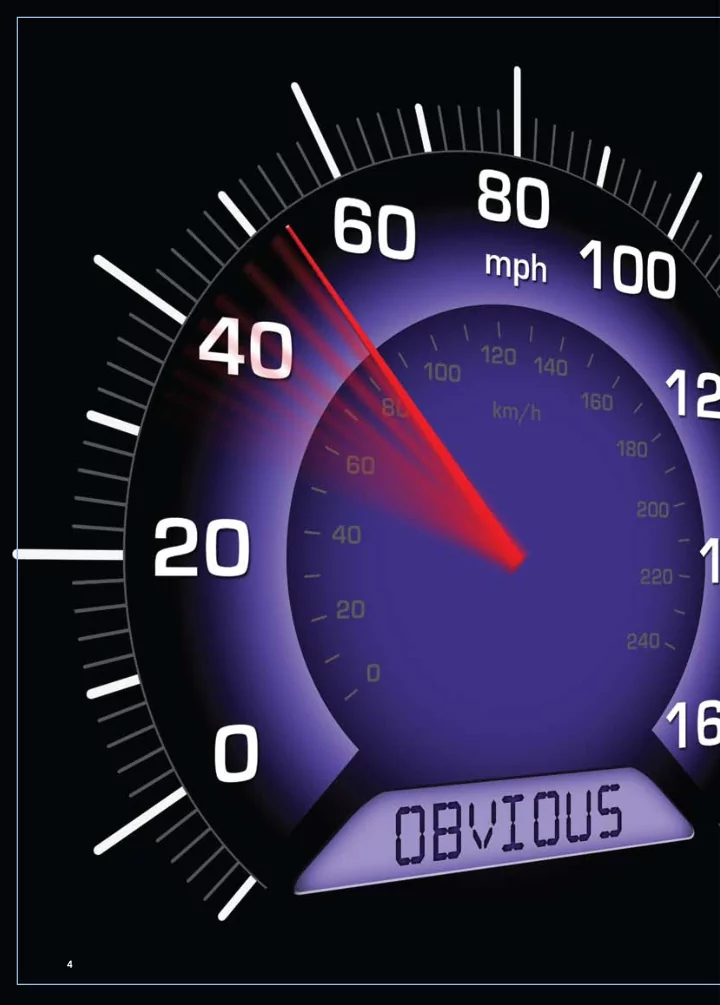

4
5 By GREGORy A. CASTANIAS, PETER G. THURLOW & MICHAEL DALLAL he United States Supreme Court ruled in KSR Int’l Co. v. Teleflex, Inc. , 550 U.S._, 127 S. Ct. 1727, 167 L. Ed. 2d 705 (April 30, 2007), that the United States Court of Appeals for the Federal Circuit had been applying a too-rigid standard for determining obviousness under Section 103 of the Patent Act and that the standard for determining obviousness consistent with Supreme Court precedent should be more expansive and flexible. Since the Supreme Court’s decision, the Federal Circuit, district courts, and the United States Patent and Trademark Office (“PTO”) have been taking just such a more expansive and flexible approach in determining obviousness by looking to several areas for motivation to combine prior art. KSR v. Teleflex : Moving Toward a More Flexible Definition of Obviousness T
6 which was not cited by the examiner or Engelgau ing an electronic sensor at a movable point and sources had spoken of the undesirability of plac- to solve. The court found that several prior art nature of the problem the prior art was trying and in reasonable inferences taken from the combine the prior art in both the prior art itself The trial court also looked for a suggestion to by other prior art. during prosecution of the Engelgau patent, and features recited in claim 4 were taught by Asano, ing an electronic sensor at a pedal-assembly In particular, the trial court noted that all of the v. John Deere Co. of Kansas City , 383 U.S. 1 (1966). the extent of any objective indicia of nonobvious- the prior art and the claimed invention, and (4) ordinary skill in the art, (3) the difference between scope and content of the prior art, (2) the level of Court’s guidance in Graham , analyzing (1) the was obvious. The trial court followed the Supreme and holding that claim 4 of the Engelgau patent prior art and the claims of the Engelgau patent that other sources taught the desirability of plac- support member. Finally, the court noted that all FActs UnDErlyIng thE Ksr v. tElEFlEx cAsE The trial court also prior art was trying the problem the from the nature of inferences taken and in reasonable the prior art itself the prior art in both gestion to combine looked for a sug- mining obviousness. The Federal Circuit required of the prior art to be combined related to the suggestion, and motivation (“TSM”) test for deter- enough in applying the Federal Circuit’s teaching, ruled that the lower court had not been strict the trial court’s grant of summary judgment and On appeal, however, the Federal Circuit reversed to be obvious. to combine those features, the court held claim 4 the features in the claim, along with a suggestion found a combination of prior art disclosing all of same art—vehicle pedal systems. Once the court KSR’s favor, finding “little difference” between the The trial court granted summary judgment in FEDErAl cIrcUIt DEcIsIons nism for combining an electronic sensor with an the Engelgau patent was filed in 1999, the knowl- cated that well before the parent application for able automobile pedals, the Supreme Court indi- In discussing the technical background of adjust- the sensor be placed on a fixed pivot point. particular, claim 4 included a requirement that controls the throttle in the vehicle’s engine. In position can be transmitted to a computer that adjustable automobile pedal so that the pedal’s The Engelgau patent is directed to a mecha- 4 of the Engelgau patent claimed. The Court ing claim 4, among other claims, of that patent. “Engelgau patent”) and sued KSR for infring- sive licensee of U.S. Patent No. 6,237,565 (the ing adjustable pedals. Teleflex is the exclu- automobile-acceleration pedal systems, includ- competitors in the design and manufacture of mechanical technology. KSR and Teleflex are Supreme Court’s obviousness test to electro- helpful as an example of the application of the An introduction to the facts of the KSR case is edge and motivation existed to create what claim noted that inventors had been designing adjust- thE trIAl coUrt AnD also noted that self-contained modular sensors an ideal mount for a sensor. pivot point in an adjustable pedal assembly was patent—several patents indicated that a fixed motivation to create the invention in the Engelgau Court noted that the prior art was replete with in prior art patents. Most important, the Supreme disposed on adjustable pedals were disclosed various types of pedals and patents for sensors that could be taken off shelves and attached to in or on the pedal’s footpad. The Supreme Court able pedals since the 1970s. The Court cited U.S. fixed part of the pedal assembly rather than one disclosed an electronic sensor disposed on a bly, and U.S. Patent No. 5,063,811 (filed in 1990) tronic sensor on a pivot point in the pedal assem- in 1991) disclosed a pedal that included an elec- Court noted that U.S. Patent No. 5,241,936 (filed In regard to electronic sensors, the Supreme able pedal assembly that used a fixed pivot point. assertion, noting that Asano revealed an adjust- Patent No. 5,010,782 (“Asano”) as support for this to solve. ness ( i.e ., secondary considerations). See Graham
Recommend
More recommend